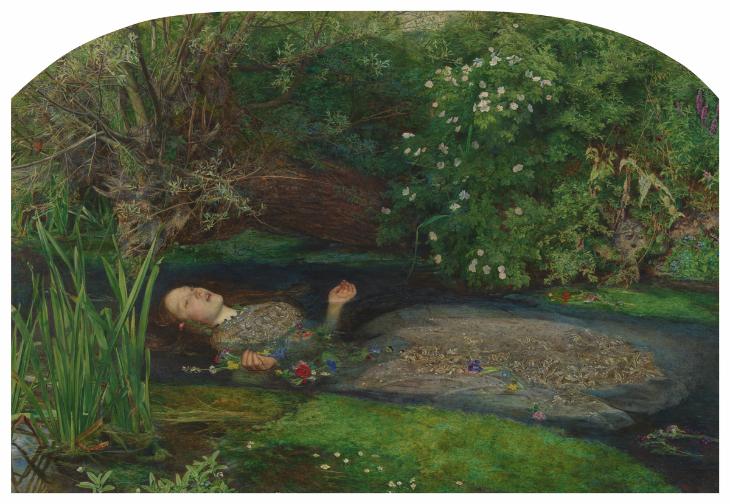Birth Date: 25 July 1829
Death Date: 11 February 1862
Location: London, England, UK
Monument Type: Historic/Residence
With a few strokes of a brush and many hours of painstaking work, Elizabeth “Lizzie” Siddal found herself to be one of history’s most famous muses—she was the subject of John Everett Millais’ Ophelia. Lizzie was born to a middle-class family in London on July 25 1829, with both her parents Charles and Elizabeth Evans hailing from English and Welsh descent. Lizzie’s upbringing took place in Southwark, a working-class neighborhood where most residents were below her in social class and ranking, yet she says she remembers the area quite fondly. While relatively well-off, Lizzie still had to work to support her family and received the average early education expected of a woman who would likely spend her entire life completing domestic tasks.
Working at a hat-making shop, also called a millinery, Lizzie sacrificed her health for the wealth of her family. The conditions were poor, and the fumes she breathed in every day led to continuous respiratory issues—even as a girl this work made her sick and she wanted a way out. At 19 years old, this first chance would come when she modeled in Milais’ Ophelia, as a muse for the artists’ depiction of a Shakespearean moment; sources say that Millais first met Lizzie while she was working at the hat shop, though there is no clear evidence of that fact. This connection to artists would not be the only one she would make, as eventually came Walter Deverell, a wealthy U.S.-born artist who was a member of the Pre-Raphellite brotherhood, an artistic society that painted works for a movement that took the same name. Entranced by Lizzie as a subject of artistic inspiration, he decided to sit her as a model and produce the works A Pet and The Grey Parrot. Both paintings were published in the Brotherhood’s Periodical “The Germ,” which broadcast Lizzie’s image to many other artists or members of the Pre-Raphelite movement.
She began to sit as an artist’s model full-time in the mid-1850s, with many other painters choosing her as the subject of their work. This, BBC Culture writes, was likely not due to the men’s upfront attraction to her, for her thin features and red hair had not been considered desirable features in women. While not initially the reason for painting her, Culture writes that by sitting for portraits and “through her modeling work and the success of the paintings she appeared in, Lizzie helped change the public opinion of beauty”. She successfully showed that what people considered attractive and beautiful could change, additionally highlighting this fact through the completion of multiple self-portraits or artistic pieces about herself that embrace her features completely.

Ophelia by Sir John Everett Millais, Bt 1829-1896, Presented by Sir Henry Tate, 1894. Courtesy Tate Britain. Featuring Lizzie Siddal as model. Image released under Creative Commons.
Lizzie got involved with Pre-Raphelite artist Dante Rosetti in the year 1849, at 20 years old, but their relationship continued until her death. She was the lover of Rosetti, and the two married a few years before her death, but he was extremely possessive of her and eventually called for her to stop modeling for all other artists except himself; he wanted her image as his own. Unfortunately, after two years of marriage to Rosetti, Lizzie took her own life and passed away on February 11, 1862. While her story is tragic, her image lives on, as she solidifies herself as one of the few girls in history who were able to inspire and change the standards of beauty. She also left behind artistic work of her own and will continue to be remembered as one of the time’s most brilliant models.
Sources
